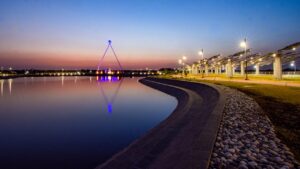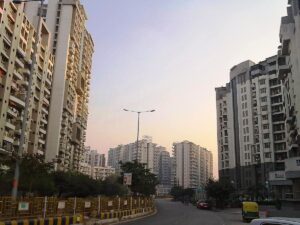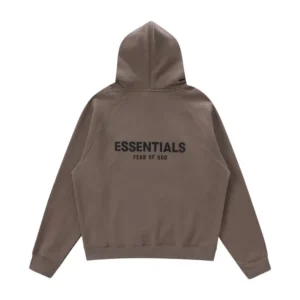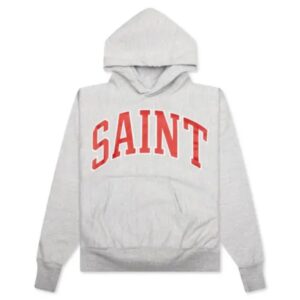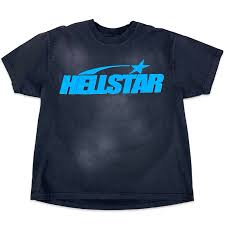
Let me cut through the fluff. If you’re planning the Sandakphu Phalut trek, you need to pack smart. This isn’t your regular weekend getaway. We’re talking about high-altitude, unpredictable weather, and trails that can challenge your limits. This list isn’t about what looks good on Instagram—it’s about what will actually help you survive and thrive on one of the most stunning treks in India.
I’ve been through this route and learned from my mistakes. So this is a straight-up guide with no unnecessary filler. Just what you need, when you need it. Simple.
Introduction – Why Packing Right Matters
Packing right for Sandakphu isn’t just about comfort—it’s about survival. You’ll be walking anywhere between 10–15 kilometers a day, often at altitudes above 12,000 feet. That means cold winds, sudden rain, harsh sun, and sometimes snow. A single bad choice—like cotton socks or a cheap poncho—can ruin your experience or worse, lead to serious trouble.
And if you’re going with a group or a guide, trust me—no one wants to wait because your shoes gave up or your jacket couldn’t hold off the wind. You need to be self-reliant.
Also, Sandakphu is not remote by accident. Things aren’t available mid-trail. So if you forget something, you’re just going to have to live without it. That’s why this list is sharp, functional, and proven. I’ve walked this path, and everything below is what I carried—or wish I had.
Essentials You Can’t Miss
Backpack and Daypack – Your Travel Base
Your backpack is your lifeline. Go for a 50-60L trekking backpack with a solid frame and adjustable straps. It should fit like a glove and sit tight on your hips, not your shoulders. For the trek itself, a 20-30L daypack is perfect for daily needs like water, snacks, rain gear, and personal items.
Pro Tips:
-
Choose a backpack with a rain cover (or buy one separately).
-
Go for one with front and side access zippers—it’s a game changer when you need something buried deep.
-
Try it out loaded before you go. Walk around. If it pulls your back, ditch it.
Documents and Permits – Non-Negotiable
Even if your trip is guided, you’re required to carry photo IDs and permits. Most groups handle the permit process, but you should still keep a copy of:
-
Govt. issued ID (Aadhar/Passport)
-
Passport-sized photos
-
Medical certificate (required by some operators)
-
Travel insurance (recommended)
Put all of this in a waterproof zip-lock pouch. No one wants soggy documents at a forest checkpoint.
Clothing for Sandakphu Phalut – Dress Like a Pro
Base Layers – Your Second Skin
Base layers are what keep your body insulated and dry. Think thermal tops and bottoms made of merino wool or polyester. Cotton is your enemy here—it holds moisture and gives you chills.
You’ll need:
-
2 moisture-wicking base layer tops
-
2 base layer bottoms
-
1 extra for sleeping (keep it dry at all costs)
This layer never comes off during cold days. It acts as the foundation of your clothing system, so invest in quality.
Insulation Layers – Stay Toasty
Your insulation layer traps heat. Fleece or down jackets are great choices. I always carry:
-
1 mid-weight fleece jacket
-
1 light down jacket (compact, packs small)
Fleece is breathable and can be worn while trekking. Down is your go-to for evenings and early mornings.
Bonus Tip: Look for a jacket that packs into its own pocket—it’ll save space and hassle.
Outer Layers – Wind and Waterproof Jackets
You’ll definitely face wind. You might face rain. Sometimes both at once. So don’t skimp here.
Carry:
-
1 hardshell waterproof jacket (with a hood)
-
1 windbreaker (optional if you already have a hardshell)
Look for jackets with pit zips for ventilation and adjustable cuffs. Trust me, they’re worth every penny when the storm hits.
Bottom Wear – Trek-Friendly Options
Ditch your jeans. They’re useless here. You want quick-dry trekking pants, preferably with zip-off legs so they double as shorts.
Pack:
-
2 trekking pants
-
1 thermal bottom for night
-
1 pair of fleece pants for camps
If you’re sensitive to cold, layer up. Thermal + fleece + windproof pants is a bulletproof combo.
Footwear – It’s All About the Right Shoes
Trekking Boots – Grip, Ankle Support, Waterproofing
Your boots make or break this trek. Go for ankle-length, waterproof boots with good grip. Break them in before the trek. Never wear new boots on trail day.
Features to look for:
-
Vibram sole or similar for grip
-
Waterproof membrane (Gore-Tex preferred)
-
Ankle support
-
Cushioned midsole
You’ll cross mud, rocks, snow, and everything in between. Bad shoes = blisters, pain, regret.
Socks – Layer Up Smartly
Layering socks is underrated. You’ll want:
-
2 pairs of thin liners (wick away sweat)
-
3 pairs of woolen trekking socks (insulate)
-
1 thick pair for sleeping
Change socks every day. Dry feet are happy feet. Wet ones? A recipe for blisters and misery.
Sleeping Essentials – Be Warm, Sleep Well
Sleeping Bag – Temperature Ratings Matter
At Sandakphu and Phalut, temperatures can dip well below freezing, especially between November and March. A warm, reliable sleeping bag isn’t optional—it’s your lifeline at night. Look for one with a comfort rating of at least -5°C to -10°C.
Here’s what to consider:
-
Go for a mummy-style sleeping bag; they trap heat better.
-
Down-filled bags are warmer and lighter, but synthetic ones are easier to maintain and handle moisture better.
-
Make sure it has a hood with drawstrings—it helps lock in warmth.
Even if you’re staying in trekkers’ huts or tea houses (which you likely will), don’t depend on their bedding. Bring your own. The insulation from your sleeping bag will be the difference between a restful night and a freezing mess.
Pro Tip: Test it once at home or during a weekend trip before taking it on the actual trek. The last thing you want is a faulty zip or too-tight fit at 10,000 feet.
Sleeping Liner – Hygiene and Extra Warmth
A sleeping bag liner is like a bedsheet inside your sleeping bag. It adds about 5°C of warmth and keeps your sleeping bag cleaner for longer.
-
Go for fleece or silk liners.
-
It packs small but offers big returns in warmth and hygiene.
-
Useful in tea houses where blankets are shared or not well maintained.
You’ll thank yourself for carrying one, especially when you crawl into your bag after a long, cold, sweaty day.
Personal Care – Keep It Light but Right
Toiletries Kit – Compact Yet Complete
You’re not glamping, but basic hygiene is non-negotiable. I keep my toiletries compact and multipurpose.
Here’s what goes in my kit:
-
Biodegradable soap or all-in-one travel soap
-
Small toothpaste and brush (foldable is best)
-
Toilet paper and wet wipes (absolutely essential)
-
Quick-dry towel
-
Deodorant (roll-on, small)
-
Hand sanitizer
-
Feminine hygiene products (for women, obviously—carry extra in case)
All of this fits into one small pouch. Keep it dry and accessible. You won’t be showering daily, but that doesn’t mean you should stink up your sleeping bag either.
Bonus: Carry a small mirror and nail clipper. You’d be surprised how useful they become.
Sun Protection – It’s Crucial
Don’t underestimate the sun at altitude. Even when it’s freezing, UV rays are intense.
Here’s what you must carry:
-
High SPF sunscreen (50+)
-
Lip balm with SPF
-
Sunglasses (UV-protected, polarized if possible)
-
A wide-brim hat or cap
-
A neck gaiter or buff (protects against sun, wind, and dust)
Burnt skin hurts, and dry lips crack. A little prep here goes a long way, especially when you’re walking under a blazing sun with snow reflecting double the intensity at your face.
Medical Kit – Self Care Up There
First Aid Basics – Blisters, Headaches, Altitude
You’re your own first responder out there. Don’t count on anyone else to carry stuff for your blisters or altitude sickness.
Here’s what I pack:
-
Band-aids and blister pads (Compede or Leukoplast)
-
Antiseptic cream (like Betadine)
-
Crepe bandage
-
Painkillers (Paracetamol, Ibuprofen)
-
Diamox (for altitude sickness – only after consulting a doctor)
-
ORS (electrolyte powders for dehydration)
-
Antacids and anti-diarrhea meds
Trust me, even a small cut can turn nasty in wet and dirty trail conditions. Be prepared.
Personal Medicines – Don’t Depend on Others
If you take daily meds—blood pressure, asthma, insulin, thyroid—carry enough for the entire trek plus two days. You won’t find a chemist at 11,000 feet.
Keep your meds in a waterproof pouch and inform your trek leader or partner about them in case of emergencies.
Pro Tip: Also pack a digital thermometer and a few adhesive cold packs—just in case.
Tech & Accessories – Power Up
Power Bank, Headlamp, Chargers
Electricity is patchy in Sandakphu and Phalut. In some places, it’s solar-powered and rationed. That means you cannot count on daily charging.
Here’s the fail-safe list:
-
Power bank (10,000 mAh minimum; preferably 20,000)
-
Headlamp (better than torch—keeps hands free)
-
Spare batteries
-
Charging cables
-
Universal adapter (if you’re a foreigner)
Avoid carrying large camera rigs unless you’re really into photography—your phone with a decent lens will do just fine.
Pro Tip: Turn on airplane mode and keep your phone warm to preserve battery. Cold drains it fast.
Camera or Phone – Capture the Magic
The views at Sandakphu are pure postcard material—Kangchenjunga, Everest, Lhotse, Makalu. A good phone camera does wonders here, but if you’re carrying a DSLR or mirrorless, keep it light and weather-protected.
Carry:
-
Extra SD card
-
Spare battery
-
Small tripod or gorilla pod
And don’t forget a microfiber cloth to wipe off mist and dust.
Food & Hydration – Fuel Your Hike
Snacks – Quick Energy Boosters
Trekking burns calories fast. And meals on the trail may not come exactly when hunger strikes.
Pack these:
-
Energy bars
-
Trail mix (nuts, raisins, chocolate bits)
-
Peanut butter sachets
-
Glucose tablets
-
Instant noodles or soup sachets (for late-night hunger)
Small, high-calorie, and easy-to-digest snacks are your best bet. I usually munch something every hour or two—it keeps my legs going.
Water Bottles and Purifiers – Stay Hydrated Safely
Dehydration at altitude creeps in quietly and hits hard. You must drink 3–4 liters a day.
Pack:
-
2 water bottles (1L each)
-
Purification tablets or LifeStraw bottle
-
Thermos flask (for warm water or tea)
Some places have spring water that’s drinkable, but I always purify just to be safe. It’s a small step for big peace of mind.
Trekking Gear – When You Go the Guided Way
If you’re signing up for a guided trek (which I recommend unless you’re a seasoned trekker), most gear like tents and food is taken care of. But some extras can enhance your experience.
Carry:
-
Trekking pole (your knees will thank you on steep descents)
-
Gaiters (for snow or muddy patches)
-
Rain cover for bag and body
-
Headscarf or bandana (keeps hair and sweat in check)
-
Trash bag (Leave No Trace!)
One company I found reliable and highly organized is The Searching Souls. They’re professional, environmentally conscious, and safety-first in their approach. While I’m not endorsing anyone blindly, I felt well taken care of throughout and noticed their attention to detail—especially in hygiene, safety briefings, and local support.
Guided Trek Recommendation – My Go-To Choice
If it’s your first time to Sandakphu or you’re not keen on planning every last detail yourself, going with a guided sandakphu phalut trekking is a smart move. I went with The Searching Souls, and to be honest, it made all the difference.
Here’s why:
-
They handle permits, accommodation, and meals—zero stress for me.
-
The trek leaders were not only certified in high-altitude first aid but were also genuinely passionate about the region.
-
What stood out most was their focus on eco-friendly trekking—cleaning up trails, carrying reusable utensils, and teaching us how to leave no trace.
This isn’t a plug—it’s just a personal recommendation. I like knowing someone’s got my back if something goes wrong at 12,000 feet. Plus, their pre-trek fitness routine and gear checklist helped me prepare better.
So, if you’re on the fence about going solo vs. guided, I’d say give guided a shot, especially with The Searching Souls. It makes the journey more relaxed and enjoyable without watering down the adventure.
Conclusion – Pack Smart, Trek Free
Packing for the Sandakphu Phalut trek isn’t rocket science—but it is a game of details. What you carry on your back for those six to seven days will shape every moment of your experience—whether that’s surviving the biting wind at Tonglu or soaking in the golden sunrise at Phalut.
Stick to the essentials. Don’t overpack. And don’t cut corners on quality gear—your body and your trek mates will thank you for it. Think layers, think light, and think smart.
I’ve kept this guide as real as possible—no fancy fluff, just what works. I’ve made my share of mistakes so you don’t have to. Follow this no-nonsense list, and you’ll be all set for one of the most rewarding treks India has to offer.
FAQs
1. Can I rent trekking gear for Sandakphu?
Yes, in cities like Siliguri or even from some trek organizers like The Searching Souls. But make sure the quality is solid—especially for boots and sleeping bags.
2. What’s the best time to do the Sandakphu trek?
There are two prime windows: April–May for clear skies and rhododendrons, and October–December for snow and panoramic mountain views.
3. Is Sandakphu trek suitable for beginners?
It’s moderate in difficulty. If you’re reasonably fit and prepare for altitude, it’s a great first multi-day trek.
4. Are there ATM or mobile network facilities on the trek?
Carry cash from Siliguri. Network is patchy. Jio and BSNL work at a few spots. Don’t depend on it.
5. How do I train for the trek?
Start at least 4 weeks in advance. Cardio (running, cycling), leg workouts (squats, lunges), and long walks with a backpack are key.
